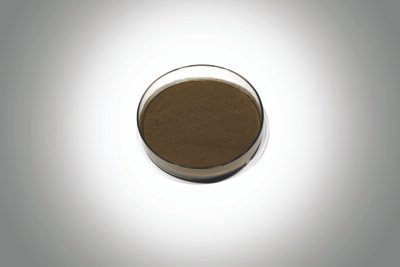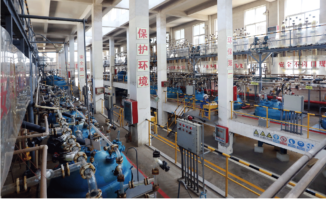Blog
Ferrous Glycinate

Product Properties
Dark brown or grayish green powder, easy to absorb moistur and soluble in water.
Product Features
- A new type of iron supplement, ferrous glycinate is a chelate with a cyclic structure formed by iron and glycine, The significant difference from the traditional inorganic iron acid and organic iron acid is that iron ion is located in the center of the five-membered ring chelate, does not exist in the form of free Fe2+, and will not cause gastrointestinal irritation; It can also reduce the antagonism between elements and thus increase the utilization of iron.
- Among many amino acids, glycine is the amino acid with the smallest molecular acids weight. The chelate formed by its reaction with iron also has the smallest molecular weight and can be better absorbed and utilized by the human body. It can play the dual role of supplementing iron and glycine. Studies have shown that the absorption of ferrous glycinate is 4.5 times higher than that of ferrous sulfate.
- The ferrous glycinate produced by Donghua Jinlong has high purity, no anion interference, and no organic solvent residue. lt has good palatability, no irony taste, and does not affect product quality when added to food.
Usage
- Widely used in food, medicine, health care products and other industries.
- It can be directly used to fortify iron nutrition in dairy products, cereals, beverages and other foods.
- It can be made into granules, tablets, capsules, oral liquid and other health care products.


Dosage
| Modulated milk | 10mg/kg~20mg/kg |
| Modulated milk powder (except for children, pregnant/breast-feeding woman) | 25mg/kg-135mg/kg |
| Modulated milk powder (for children only) | 50mg/kg-175mg/kg |
| Modulated milk powder (for pregnant and breast-feeding woman only) | 50mg/kg-280mg/kg |
| Soy flour, soy milk powder | 46mg/kg-80mg/kg |
| Candies (except for gum-based candies) | 600mg/kg-1200mg/kg |
| Rice, wheat flour, multigrain flour and its products | 14mgjkg-26mgjkg |
| Ready-to-eat cereals, including rolled oats (flakes) | 35mg/kg~80mg/kg |
| Bread | 14mg/kg-26mg/kg |
| Pastries | 40mg/kg~60mg/kg |
| Biscuits | 40mg/kg~80mg/kg |
| Other baked food | 50mg/kg~200mg/kg |
| Soy sauce | 180mg/kg~260mg/kg |
| Beverages (except for packaged drinking water and solid beverages) | 10mg/kg-20mg/kg |
| Solid beverages | 95mg/kg~220mg/kg |
| Jelly | 10mg/kg~20mgjkg |
Specification Sheet
| ltems | Index |
| Molecular formula | Fe(NH2CH2COO)2·2H20 |
| Molecular weight | 239.99 |
| CAS No. | 20150-34-9 |
| Product standard | GB30606-2014 |
| Appearance | Dark brown or grayish green powder |
| Ferrous iron (Fe2*) (on the dried basis) w/% | 20.0-23.7 |
| Nitrogen (on the dried basis) w/% | 10.0-12.0 |
| Trivalent iron (Fe?*) (on the dried basis)w/% | ≤ 2.0 |
| Loss on drying w/% | ≤ 7.0 |
| Total iron (on the dried basis) w/% | 19.0-24.0 |
| Piumbum (mg/kg) | ≤ 1 |
| Shelf life | Two years |
| Package | 10kg/Carton or according to customer’s requirement. |

